If your starter spins but doesn’t engage, it’s likely because the solenoid is broken. The solenoid activates the starter motor. So if it’s not working, the starter won’t work. Several things can cause the solenoid to fail, including a bad connection, a broken wire, or a faulty starter.
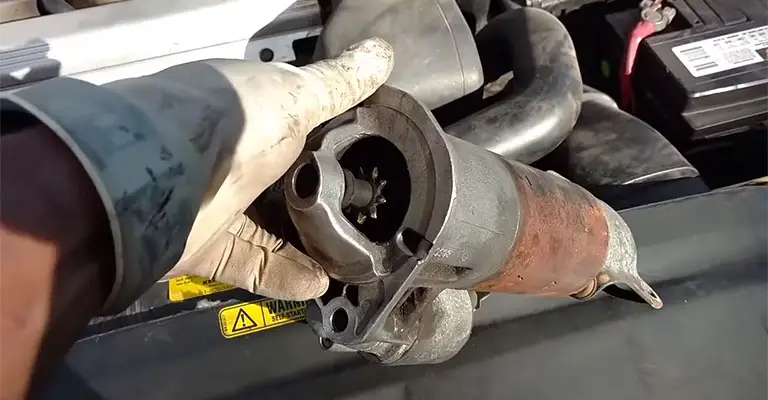
Why Does My Starter Spin But Not Engage?
Your engine starts perfectly when you turn the starter, but nothing happens. It’s annoying and scary, especially on the highway or in traffic. Starter problems are common but easy to fix. We have identified the most common reasons and most effective ways to engage your starter.
Starter Motor
A starter motor is an electric motor that turns the engine over to start the vehicle. When the driver turns the key to start the vehicle, the starter motor engages. When the key is turned, a small gear in the starter motor engages with a larger ring gear on the engine.
The armature of the starter motor (a rotating part that generates electricity) then spins, turning the engine over and starting the vehicle.
Starter Motor Location
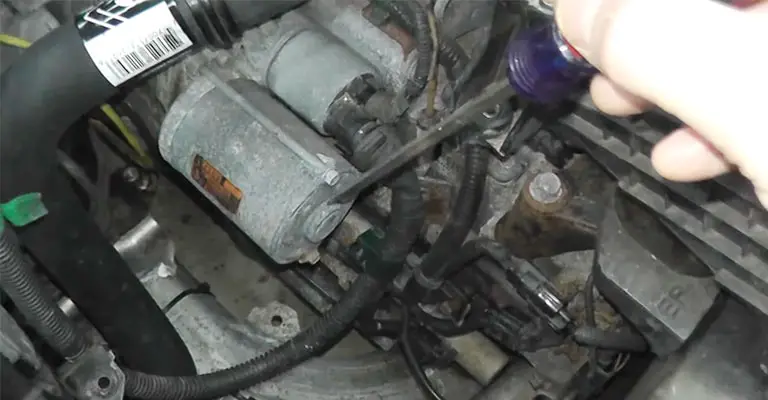
The starter motor is usually found on the flywheel or flexplate of the engine. If you can’t see it, follow the large cable from the battery-positive terminal to the solenoid. When you turn the key, the solenoid sends power to the starter motor.
How Does a Starter Motor Work
A starter motor is an electric motor that starts the engine. The starter motor is powered by a battery, which provides a large amount of power to turn the engine over.
The starter motor has a small gear that meshes with a larger gear on the flywheel. When the starter motor is turned on, the small gear spins and turns the flywheel, which starts the engine.
Common Causes | My Starter Spins but Not Doesn’t Engage
There are several reasons why your starter motor may spin but not engage. The most common cause is that the starter solenoid is damaged or corroded. If this is the case, you’ll need to replace the starter solenoid.
Low Battery Voltage
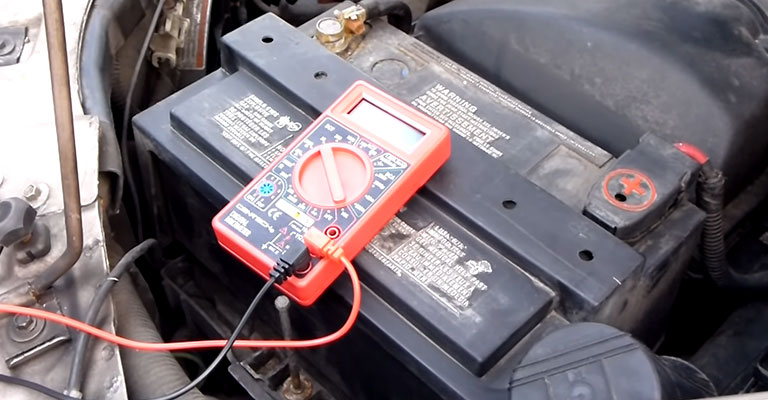
Low battery voltage is one of the most common causes of a starter not engaging. If your battery is more than three years old, it may not have enough power to start your car. A voltmeter can be used to test the voltage of your battery. If the reading is 12.4 volts or less, it’s time to replace the battery.
Defective Starter Solenoid
One of the most common causes of a starter not engaging is a faulty starter solenoid. Because the starter solenoid is in charge of supplying power to the starter motor, if it fails, the engine will not start. Replacing the starter solenoid is usually a simple fix that can be done without taking the car to a mechanic.
Flywheel Damage
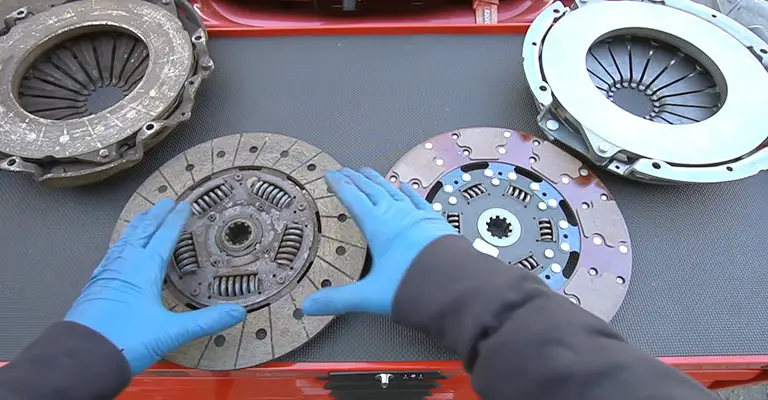
One of the most common reasons a starter won’t engage is a damaged flywheel. The starter’s gear engages with the flywheel to turn the engine over. If it is damaged, the starter will not function properly.
There are a few ways to tell if your flywheel is damaged. First, if you hear grinding noise when you try to start your car, it’s a good sign that something is wrong with the flywheel.
Sticky Starter Solenoid Contacts
A starter solenoid is a wire coil that, when energized by the starter switch, closes heavy-duty contacts to supply current to the starter motor. Over time, corroded or dirty contacts can prevent proper closure. When this happens, your starter won’t engage.
Defective Plunger, Pinion Gear, or Ring Gear
One of the most common reasons a starter won’t engage is that the plunger is broken. The plunger is what pushes the pinion gear into the ring gear, so if it’s broken, the car won’t start.
Another possibility is that the pinion gear is stripped or damaged. This can happen if the starter was installed incorrectly or if the car was started without enough oil in the engine. Finally, the ring gear may be damaged.
Starter Wiring Problem
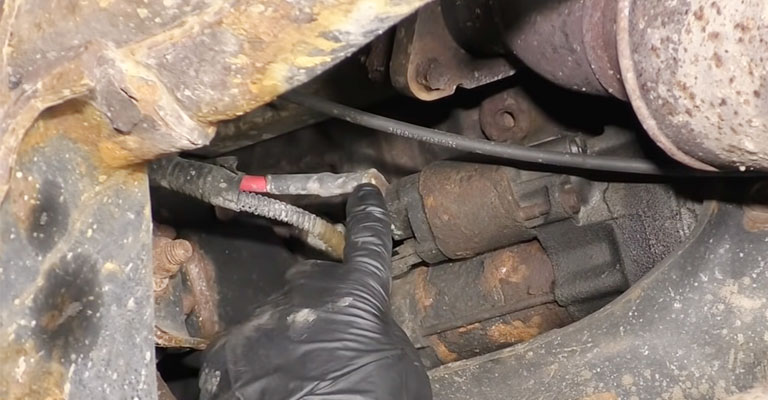
Faulty wiring can result in a spinning starter. If the starter receives power but does not engage, it could be because the wire connecting the starter solenoid to the battery is loose or corroded. To resolve this, clean the connection and ensure it is tight.
Symptoms of a Faulty Starter Motor
If your starter motor fails, you will most likely notice some or all of the following symptoms:
- When you turn the key, the engine does not start.
- When you turn the key, you hear a clicking noise.
- When you turn the key, the engine slowly starts.
- After you turn the key to the off position, the starter motor continues to run.
- There is a burning odor coming from the starter motor area.
Starter Motor Replacement Cost
The average cost of a starter replacement is between $344 to $436. Labor costs are estimated to be between $158 to $200, while parts are priced between $186 to $236.
This price range excludes taxes and fees and does not account for your specific vehicle or location. When diagnosing the problem, your mechanic will first check the battery to see if it is functioning properly.
FAQ
Will a starter spin if the solenoid is bad?
A starter solenoid is in charge of sending an electric current to the starter motor. If your starter solenoid fails, your starter may spin but not engage. There are several methods for determining whether or not your starter solenoid is faulty.
First, check the voltage at the solenoid terminals. If the voltage is low, it could be due to a faulty connection or a problem with the battery. Another way to test the solenoid is to manually engage the starter.
How do you check if the starter relay is working?
There are several methods for determining whether your starter relay is operational. Check to see if the engine starts when you turn the key. If it isn’t, the problem could be with the starter relay. Another method is to use a multimeter to check the continuity of the starter relay.
Where is the starter relay fuse?
The starter relay fuse is usually found in the engine compartment, near the battery. If it isn’t there, consult your owner’s manual or service manual to determine its location. Once you’ve located it, check to see if the fuse is blown. If it is, replace it with a new one of the same amperage.
Is a starter relay and solenoid the same thing?
Ans: A starter relay controls electricity to the solenoid. When energized, the solenoid creates a magnetic field. The magnetic field pulls on the starter armature, engaging the starter gear with the flywheel. The short answer to your question is no—a starter relay and a solenoid are two different components.
Last words
If your starter spins but does not engage, it is most likely due to one of three problems: the battery, the solenoid, or the starter itself. If you’re experiencing this issue, we recommend first checking the battery. If the battery is fine, inspect the solenoid. If neither of these is the case, the starter should be replaced.
Leave a Reply